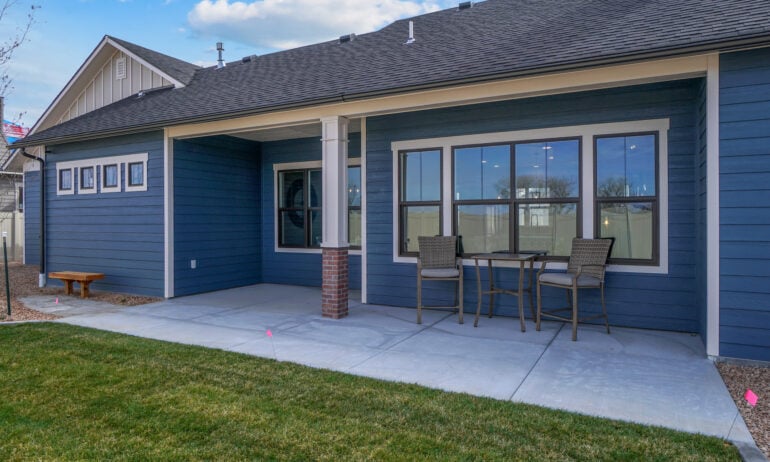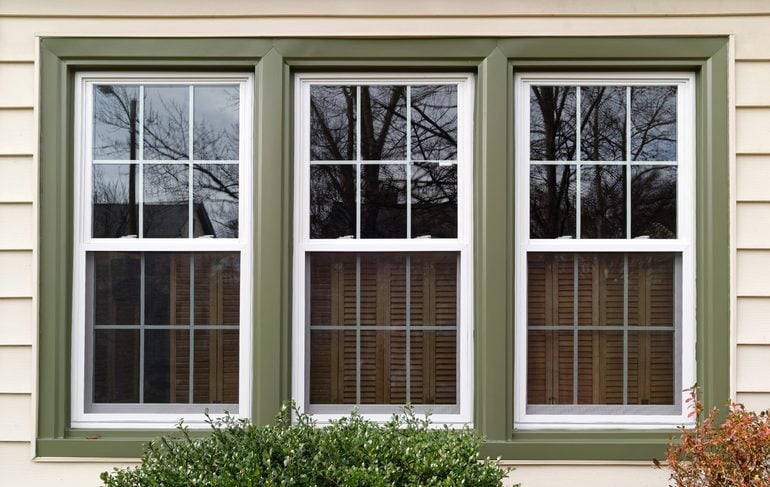Single vs Double Hung Windows: Cost, Safety, Energy Efficiency
Double-hung windows are slightly more expensive, easier to clean and ventilate, and less energy-efficient.

Some or all of the mortgage lenders featured on our site are advertising partners of NerdWallet, but this does not influence our evaluations, lender star ratings or the order in which lenders are listed on the page. Our opinions are our own. Here is a list of our partners.
Single-hung windows have only one operable sash, which is the framed glass panel that moves to open the window. Double-hung windows have two moving sashes.
Single-hung windows are generally less expensive and more energy efficient, while double-hung windows are easier to clean and offer more ventilation. And single-hung windows are common in older homes, while double-hung windows are popular in more modern homes, especially in upper stories where windows are harder to access from the outside for cleaning.

Deciding factors
Single-hung | Double-hung | |
|---|---|---|
Cost | $100 to $400. | $150 to $600. |
Energy efficiency | More efficient. | Less efficient. |
Ventilation | No ventilation along the top. | More ventilation from the top and bottom. |
Maintenance | Harder to clean the fixed-sash panes on the outside. | Easier to clean. |
Appearance | Recognizable, classic look for historic home charm. | Versatile look for modern homes. |
Appearance
Single-hung and double-hung windows can look similar when closed. However, both panes are movable on a double-hung window, while single-hung windows have one pane permamently fixed in place.

Double-hung window. Getty Images.

Single-hung windows. Getty Images.
Cost
Because the window contains slightly fewer moving parts and components, single-hung windows tend to cost less than double-hung windows. Costs can vary depending on the following factors:
Material. Vinyl, aluminum and wood windows are typically the most affordable, while steel, fiberglass and composite tend to be more expensive. Materials vary in energy efficiency, and because double-hung windows are less energy-efficient, you may want to invest in a more energy-efficient material.
Size. Expect extra-large and oversized windows to cost significantly more than standard-sized windows.
Energy-efficient features. Installing double-paned (also called double-glazed) or triple-paned glass in your windows can significantly improve their energy efficiency. Expect your window cost to at least double with each additional pane.
Installation. Typical labor costs for installation range from $100 to $300 per window.
Removal. If the window opening needs to be resized, for example, expect to pay an additional $100 to $500 per window. If you just need to remove the old window, expect to pay around $50 to $150.
Maintenance
Single-hung windows can be a challenge to clean since the outside of the fixed sash is harder to reach from inside. Repair costs are typically minimal for normal wear-and-tear because of the simplicity of the moving parts involved.
Double-hung windows are easier to clean because the operable sashes can move enough to reach all window surfaces from inside. However, because they have more moving parts and more complexity, more things can break and need repairs than single-hung windows.
Energy efficiency
Single-hung windows have fewer options for ventilation, which makes them slightly more energy efficient. Double-hung windows have more moving parts and a larger total area that needs to seal well to prevent draftiness, resulting in a slightly worse “U-factor,” an insulation measurement used by the U.S. Department of Energy .
However, other factors such as multiple panes, frame materials, weatherstripping quality and seal tightness can minimize the differences in energy efficiency between the two window types.
Before purchasing a window, check that the window’s U-factor aligns with Energy.gov recommendations for your climate zone. Look for an ENERGY STAR label or section on the window company website.
Safety
When properly secured with locks, single-hung windows and double-hung windows are both secure. However, you can only open single-hung windows from the bottom, which can be a fall risk for pets or young children.
Double-hung windows have less of a fall risk when opened from the top. However, if a double-hung window isn’t tightly locked, an intruder could use the gravity force on the top sash to wiggle the upper sash down. Some modern double-hung windows come with independent locks on each sash or other features designed to make them tamper-proof and forced-entry-resistant.
Alternative window style options
While double-hung and single-hung windows are common, other options may work better for certain locations in some homes. Here are other popular options:
Casement windows crank open with a handle, opening outward like a door. They’re not a great fit if there’s no clearance right outside the window, but many people like them for their clean lines and ease of opening.
Picture windows are fixed and don’t open. They’re often designed to be oversized in a spot where you can get tons of great light or a beautiful, uninterrupted view. They’re also used in out-of-reach spots where it’d be challenging to open them anyway, like in a high-ceiling foyer.
Bay windows include a large window set out from the wall, with two smaller windows connecting it to the home, forming a small jutted-out portion from the main body of the house.
Sliding windows operate like sliding doors, with two windows on separate tracks that slide sideways rather than up and down.
» MORE: How to pick windows








